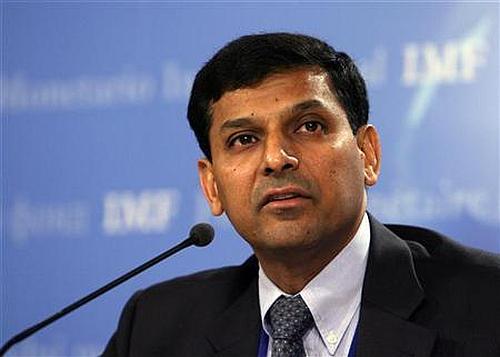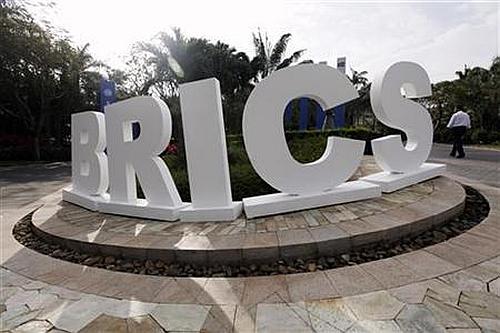 | « Back to article | Print this article |
Eco Survey: Government likely to hit fiscal deficit target of 5.3%
India is likely to hit a fiscal deficit target of 5.3 percent of GDP this year despite a significant shortfall in revenue, a government report said on Wednesday, a day before the budget, but it conceded economic growth would be a sluggish 5 percent.
The annual report on challenges facing the economy was prepared by Raghuram Rajan, a former chief economist to the International Monetary Fund (IMF) who became the top adviser in the finance ministry last year.
It came a day before Finance Minister P. Chidambaram unveils what is expected to be the most austere budget in years. Since returning to the finance ministry for his third stint in August, Chidambaram has cut spending sharply in a drive to narrow the fiscal deficit.
Rajan had previously said that 5.3 percent was a "tough" deficit target for fiscal 2012-13 (April-March), but the spending cuts in areas such as welfare, defence and road projects have convinced economists that the goal may be reachable, even though weak corporate performance and growth has hit tax receipts.
However, the report said more tax income was needed.
"It is better to achieve fiscal consolidation partly through a higher tax-GDP ratio than merely through reduction in the expenditure-to-GDP ratio, in view of large unmet development needs," the report said.
Click NEXT to read more...
Railway Budget, as it unfolded on February 26
Complete coverage: Union Budget 2013-14
Budget Impact Live!
Eco Survey: Government likely to hit fiscal deficit target of 5.3%
A deficit of 5.3 percent of GDP would remain the widest spending gap among the BRICS group of major emerging nations, which also includes Brazil, Russia, China and South Africa.
It makes credit costly for the private sector and is the main reason for threats by ratings agencies Standard & Poor's and Fitch to cut India's sovereign credit rating to 'junk'.
"There is no escape route in achieving the 5.3 percent fiscal deficit target and I do not expect any slippage," said Anubhuti Sahay, an economist at Standard Chartered Bank. "Reining in expenditure is likely to remain a theme for FY14. However, this is not the way to manage the overall growth story. You have to manage the supply side in the middle to long term."
Lowest Growth
The report forecast the economy will grow 5 percent this fiscal year, falling in line with a separate government forecast that Rajan and Chidambaram questioned earlier this month, saying it was based on old data. Such low growth is the worst in a decade and could make the deficit target harder to reach.
Rajan's report predicted Gross Domestic Product growth of 6.1-6.7 percent in the financial year that starts in April, roughly in line with private economists' recent forecasts.
Click NEXT to read more...
Railway Budget, as it unfolded on February 26
Complete coverage: Union Budget 2013-14
Budget Impact Live!
Eco Survey: Government likely to hit fiscal deficit target of 5.3%
On Thursday, India is due to report GDP data for the quarter ending in December.
Prioritising expenditure and further cuts to subsidies on fuel are also key to medium-term fiscal consolidation, the report said. Chidambaram has vowed to bring the deficit down to 4.8 percent in the fiscal year that begins in April.
The report said further reining-in of the fiscal deficit, which hit 5.8 percent of GDP last year, would create room for "more accommodative" monetary policy. The Reserve Bank of India lowered interest rates for the first time in nine months in January, but rates remain among the highest of major economies.
The report recommended further curbing gold imports to narrow the current account deficit, which is likely to be at a record of about 5 percent this fiscal year.
India is prone to wide external deficits because it imports nearly 80 percent of its oil needs.
Imports of gold, used by small investors as an inflation hedge, are another driver of the deficit and remain high despite a recent hike to import tariffs for the yellow metal.
The imbalance has weakened the rupee, driving up the cost of imports, which puts pressure on inflation. To fund the high external deficit India relies heavily on foreign fund flows, exposing it to the risk of capital flight.
(Additional reporting by Suvashree Choudhury)
Railway Budget, as it unfolded on February 26
Complete coverage: Union Budget 2013-14
Budget Impact Live!

© Copyright 2024 Reuters Limited. All rights reserved. Republication or redistribution of Reuters content, including by framing or similar means, is expressly prohibited without the prior written consent of Reuters. Reuters shall not be liable for any errors or delays in the content, or for any actions taken in reliance thereon.


